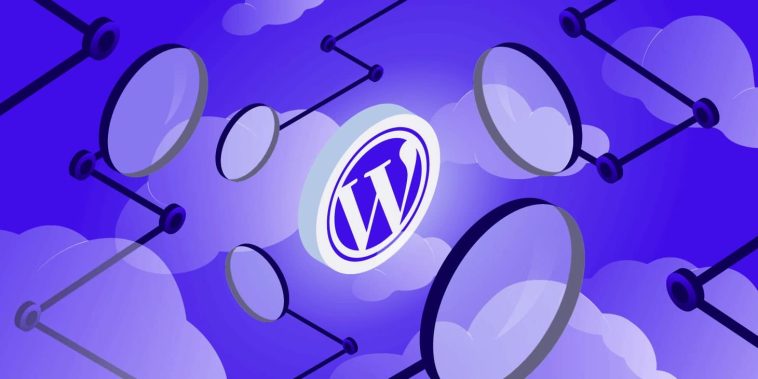Introduction.
Starting an eCommerce business is more than just a buzzword—it’s a genuine opportunity to turn a passion, idea, or hobby into a successful venture.
With the global eCommerce market growing rapidly, it’s no surprise that people are looking to dive in. In fact, in 2023 alone, global retail eCommerce sales reached a staggering $6.3 trillion and are projected to rise even more in the coming years.
But here’s the thing: launching an eCommerce store can seem intimidating. Where do you even begin? Which platform do you choose? And if you’re on a budget, it gets more complicated. That’s where WordPress comes into the picture.
You might know WordPress as a platform for bloggers, but with the right tools and a bit of creativity, it’s an absolute powerhouse for building a fully functional eCommerce business. And the best part? It’s accessible, flexible, and cost-effective.
In this article, I’ll guide you through how to set up your eCommerce business using WordPress, discuss the advantages and disadvantages, and even provide answers to common questions you might have along the way. Let’s jump in.
What Makes WordPress a Good Choice for eCommerce?
First off, why should you even consider WordPress? The main reason is its flexibility. Unlike platforms like Shopify or BigCommerce, which come with predefined limitations, WordPress is like a blank canvas.
You can mold it to suit your unique needs. If you’re already familiar with how WordPress works, you’ve got a head start.
WordPress powers around 40% of all websites on the internet, so there’s no doubt it’s trusted worldwide.
But when it comes to eCommerce, the real magic happens when you pair WordPress with WooCommerce—a powerful, free plugin that transforms your site into an online store.
WooCommerce has more than 5 million active installations and continues to be a favourite for eCommerce entrepreneurs because of its customization capabilities and rich ecosystem.
How Do I Start an eCommerce Business With WordPress?
Let’s walk through the process of getting your eCommerce store up and running on WordPress.
1. Set Up Your Domain and Hosting.
Every website needs a domain name and web hosting. Your domain is the web address people will use to find you, like “mycoolstore.com.” You can purchase your domain from registrars like Namecheap or GoDaddy, usually for around $10-15 per year.
Hosting is where your site’s files are stored. Since eCommerce websites often require more resources than simple blogs, consider using a WordPress-optimized hosting service like SiteGround, Bluehost, or WP Engine. A decent hosting plan might cost anywhere from $3.95 to $30 per month, depending on your needs.
2. Install WordPress.
Most hosting services offer one-click WordPress installation. Once it’s set up, you’ll have a basic WordPress site ready for customization.
3. Install and Configure WooCommerce.
WooCommerce is your go-to eCommerce plugin. Once installed, you’ll be guided through a setup wizard that handles basics like currency, shipping, and tax settings. It’s straightforward, but don’t worry—there are always options to tweak settings later.
4. Choose a Theme That Supports WooCommerce.
Your theme determines your store’s appearance. It’s crucial to choose a WooCommerce-compatible theme to ensure everything works seamlessly.
Popular themes like Astra, OceanWP, and Storefront are excellent options that balance aesthetics with performance.
You can find free themes in the WordPress repository, but if you want a more polished look, premium themes are worth considering.
5. Customize Your Store.
Here’s where you can get creative. Use the built-in WordPress Customizer to adjust colors, typography, and layout.
WooCommerce also allows you to add products, configure shipping options, and set up a payment gateway like Stripe or PayPal.
6. Install Essential Plugins.
While WooCommerce handles most of the heavy lifting, there are other plugins you might need. Some useful ones include:
- Yoast SEO for search engine optimization.
- WPForms for creating contact forms.
- Mailchimp for email marketing.
- UpdraftPlus for site backups.
Remember, too many plugins can slow down your site, so choose wisely.
7. Add Your Products.
Now, it’s time to add your products! High-quality images and detailed descriptions are key. Make sure you include product variations (like sizes or colors) and manage stock levels if necessary.
8. Configure Your Payment and Shipping Settings.
This is an important step. WooCommerce offers built-in options for both payments and shipping. For payment, you can easily set up gateways like Stripe, PayPal, or even bank transfers. For shipping, decide if you’ll offer free shipping, flat rates, or real-time carrier rates.
Pros and Cons of Using WordPress for eCommerce
Before you dive in, here’s a breakdown of what’s great about using WordPress and where it might fall short.
Pros:
- Cost-Effective: Starting is relatively cheap, especially if you use free plugins and themes.
- Flexibility: You have endless options to customize your store exactly how you want.
- SEO-Friendly: WordPress is built with SEO in mind, and plugins like Yoast make it even easier.
- Vast Community: Need help? There’s a massive community of developers and users who can assist.
Cons:
- Steep Learning Curve: If you’re new to WordPress, there’s a lot to learn.
- Maintenance: You’ll need to keep your site updated, which can be time-consuming.
- Security Concerns: Being so popular makes WordPress a target for hackers, so you’ll need to stay on top of security.
Frequently Asked Questions
1. Is WordPress a good platform for beginners in eCommerce?
Yes, but it depends on your willingness to learn. WordPress can be beginner-friendly, especially with a bit of patience. WooCommerce’s setup wizard is helpful, and there are plenty of tutorials to guide you.
2. How much does it cost to build an eCommerce store on WordPress?
It varies. The minimum cost would include domain and hosting (around $50-100 per year). Premium themes and plugins can add to the cost, but you can often start small and upgrade as your business grows.
3. Do I need coding skills to use WordPress and WooCommerce?
Nope! Most customizations can be done through the interface without coding. However, a basic understanding of HTML and CSS can be beneficial if you want more control.
4. How do I make sure my WordPress site is secure?
Using security plugins like Wordfence or Sucuri, regularly updating your plugins and themes, and backing up your site frequently are some ways to keep your store secure.
5. Can I scale my WordPress eCommerce site as my business grows?
Absolutely. One of WordPress’s strengths is scalability. You can start small and expand by adding more products, optimizing for performance, or even moving to a more powerful hosting plan.
Conclusion
Setting up an eCommerce business with WordPress might feel overwhelming, but it’s incredibly rewarding.
From having full control over your store’s design to managing products in a way that works best for you, the opportunities are vast.
Sure, there are some challenges, like the need for regular maintenance, but the benefits often outweigh the drawbacks.
So, is WordPress the right choice for your eCommerce business? That’s for you to decide—but if you’re looking for customization and control, it’s hard to beat.
Have you tried building an eCommerce store on WordPress? If so, what was your experience like? Let’s continue the conversation in the comments below.





GIPHY App Key not set. Please check settings